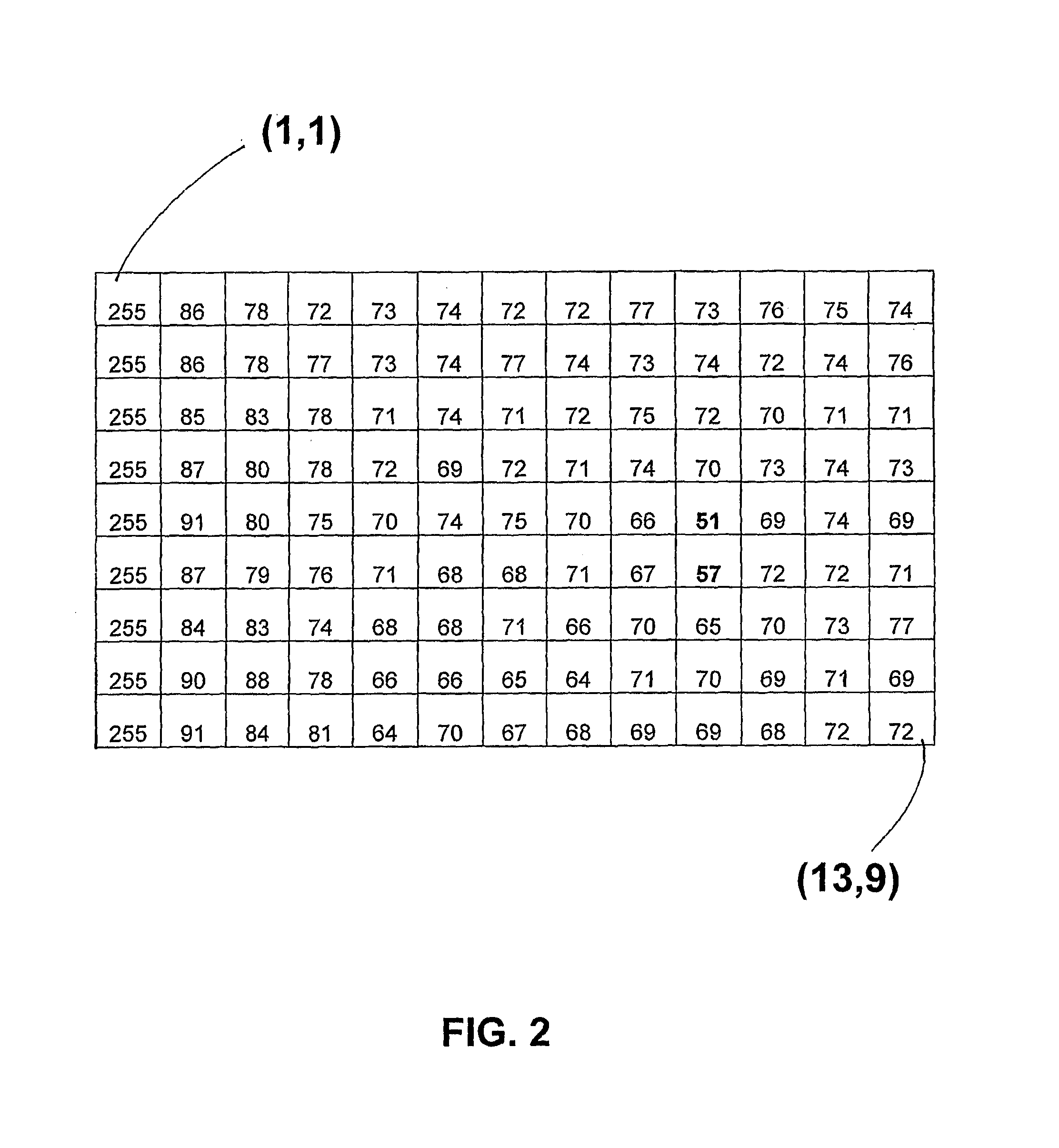X-ray imaging
a technology of x-ray imaging and x-ray light, applied in the field of x-ray imaging, can solve the problems of false detection of contaminants, inability to set a suitable threshold level, and waste of bags containing contaminants, so as to increase the speed at which the apparatus may check a product, reduce the number of pixels unnecessarily compared to their neighbours, and increase the chances of finding contaminants
- Summary
- Abstract
- Description
- Claims
- Application Information
AI Technical Summary
Benefits of technology
Problems solved by technology
Method used
Image
Examples
Embodiment Construction
[0023]Referring to FIG. 1, there is shown an X-ray imaging apparatus according to the present invention. The apparatus comprises an X-ray tube 1, a sensor array 2 for detecting contaminants and a computer 3 for processing the sensor data. A conveyer belt 4 is provided, along which products 5 to be scanned are conveyed. In use, a high voltage is applied to the X-ray tube, which emits a stream of X-rays that are focused and reduced to a fan beam that passes through a product on the conveyer belt before entering the sensor array 2, as is well known in the art. The sensor converts the X-ray signal into an 8-bit pixilated image. Each pixel has a grey value ranging from 0 to 255, where 0 represents black and 255 represents white. The image is passed to the computer for processing. There may or may not be a screen provided for displaying the image. The computer processes the 8-bit image using the following algorithm:
X=1 to Width(BITMAP)
Y=1 to Height(BITMAP)
Suspect=value(X,Y)
UpDownMin=Minim...
PUM
 Login to View More
Login to View More Abstract
Description
Claims
Application Information
 Login to View More
Login to View More - R&D
- Intellectual Property
- Life Sciences
- Materials
- Tech Scout
- Unparalleled Data Quality
- Higher Quality Content
- 60% Fewer Hallucinations
Browse by: Latest US Patents, China's latest patents, Technical Efficacy Thesaurus, Application Domain, Technology Topic, Popular Technical Reports.
© 2025 PatSnap. All rights reserved.Legal|Privacy policy|Modern Slavery Act Transparency Statement|Sitemap|About US| Contact US: help@patsnap.com


